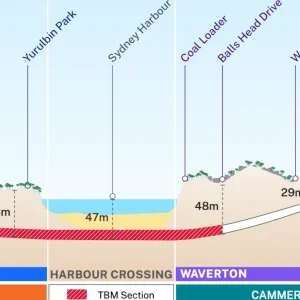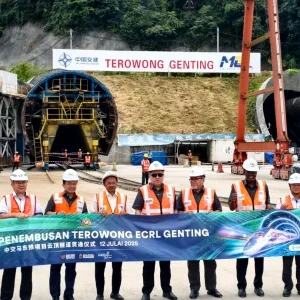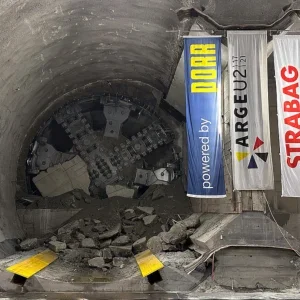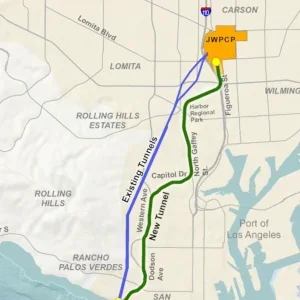Virginia officials are rallying to try and redeem the fortunes of the 24-mile (38.5km) long Dulles Metrorail project following a less than favorable assessment by the Federal Transit Administration (FTA) last month, which inferred that it is unlikely to fund the project as it is currently structured. James Simpson, head of the FTA said in a letter dated January 24 that the first $2.7 billion phase (Fig 1) of the $5.1 billion scheme “does not appear to be a prudent investment”.
Simpson’s remarks were addressed to the Metropolitan Washington Airports Authority, (MWAA), the lead agency on the project. His concerns were said to stem largely from an arrangement that would see the MWAA oversee design and construction, but then hand the scheme over to the Washington Metropolitan Area Transit Administration (WMATA) for operation of the system.
On February 1, James Bennett, President and Chief Executive Officer for MWAA, replied to Simpson’s letter in an attempt to affirm that the project deserved a rating qualifying it for federal funding, which will allow it to move into final design. This response addressed each major identified area of concern: Project Cost Effectiveness; Financial Plan; and, by far the most substantial parts of the letter, Risks and Uncertainties associated with (i) capacity of the MWAA and the project team to manage the project; (ii) the design-build contract; (iii) the ability of WMATA to finance its ongoing system-wide capital needs and maintain the project once constructed.
Bennett’s reply also stressed the need to maintain an open dialogue to work through any issues that were giving cause for concern. On the same day, Virginia Governor, Timothy Kaine, addressed a letter to Mary Peters, Secretary of Transportation, to add his support to the project.
Newspaper reports stated that as a further development to the negative FTA announcement, Republican Delegate Joe May inserted a provision in the House version of the 2008-10 budget at the end of February, which instructs the Virginia Department of Transportation to “re-solicit competitive proposals” for the scheme. Kaine has stated he will oppose any such efforts to force the state to re-bid the work, warning that re-bidding could send a “very damaging message to other potential bidders” for state projects. At a meeting of House and Senate budget negotiators, Kaine was reported to have said that one of his top priorities was to have May’s language removed.
The current furor could provide a spark of hope for proponents of a tunneled alternative for the Tysons Corner district (T&TNA, May 2007, p13 & 18), who have been seeking to have the current elevated-track portion of the Phase 1 design replaced with a 3.5-mile long tunnel along the same alignment. Scott Monett, president of advocate group Tysons Tunnel said: “It is time to put the current and troubled Dulles Metrorail proposal in the past.” He maintained: “The truth is that the current proposal is flawed, overpriced, too controversial and faces too many other challenges.”
For more on the ongoing situation visit: www.dullesmetro.com and www.tysonstunnel.com
Figure 1. The Dulles Metrorail project, showing the controversial Tysons Corner viaduct option Fig 1 – The Dulles Metrorail project, showing the controversial Tysons Corner viaduct option







